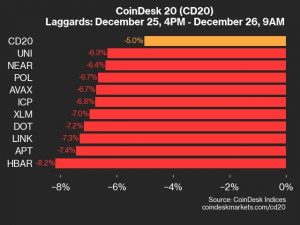While we’re not completely cashless yet—I still pay for my morning coffee and tip my barista in cash—it’s certainly trending that way. That’s why, as a business, it’s important to think about credit card payment processing and not only how you handle it but how much it costs.
So whether you’re shopping around for a new provider or reassessing your current tech stack to see where you can cut costs, it’s essential to take a look at fees for credit card processing, and how much it costs your business to accept payments.
Key takeaways:
|
What are credit card processing fees?
Credit card processing fees are the costs the businesses and/or customers incur in a credit or debit card transaction. Businesses typically pay more in fees than consumers, and in some locations, charging consumers a processing fee is illegal. New Jersey, for example, only recently legalized businesses’ ability to pass along the processing fee to customers.
Altogether, credit card processing fees refer to what businesses pay processors for their payment processing service. The majority of these fees come from the individual transaction fees, which consist of:
- Interchange fees. The customer’s issuing financial institution charges businesses an interchange fee. This is usually the biggest fee associated with credit card processing. The fee varies depending on the card used and the type of transaction. They can be flat rate or interchange plus, basically a smaller flat rate plus a percentage.
- Assessment fees. The customer card’s network—Visa, MasterCard, American Express, for example—also charges a fee. Each network has its own fees, mostly percentage-based. American Express is known for having high fees compared to many other networks.
- Payment processing fees. The payment processor, or merchant services provider, also charges a fee. This is the technology that enables the card transaction to be processed. Fee structures for payment processing have a lot more variety—they can be subscription-based, percentages, or flat fees, for instance.
However, some processors also charge fixed monthly or other fees.
What are credit card processing rates?
Credit card processing rates refer to the percentage processors charge per transaction. The higher the rates, the more you pay in fees.
What are the different credit card processing payment structures?
Credit card processing payment structures generally take the following forms:
- Tiered
- Flat rate
- Interchange plus
- Subscription
Let’s take a closer look at each one.
| Tiered | Tiered pricing is a percentage of the transaction plus a flat fee. Each tier of a transaction has its own associated fee:
|
|
|
| Flat rate | Businesses pay a single flat fee for each transaction, regardless of how much the payment is for or which payment method or type of card is used. |
|
|
| Interchange plus | Businesses pay a flat fee plus a percentage of the transaction amount. It essentially covers the interchange and assessment fees, plus the payment processor’s fee. |
|
|
| Subscription | Businesses pay a monthly subscription fee to a payment processor in exchange for its services. This may or may not include an additional discounted percentage or flat fee per transaction, depending on the provider and plan. |
|
|
How much do credit card processing companies usually charge?
The average credit card processing fee is difficult to pin down because card networks make it a bit complicated—I’d venture to say they do this intentionally.
Generally speaking, the standard credit card processing interchange fee is somewhere between 1% and 3%, though it can fall outside of that range depending on the transaction.
Here’s how the interchange fee is charged from the major card networks:
| Network | |
|---|---|
| Visa | 0.05% + 21¢ to 1.9% + 25¢ |
| MasterCard | 0.19% + 53¢ to 3.15% + 10¢ |
| American Express | 1.1% to 3.5% |
| Discover | 1.35% + 5¢ to 2.5% |
Processors then take those interchange fees, add on the assessment fees, and then their own markup. Ultimately, total processing fees typically range from 2% to 4%.
And if you’re curious about what payment processors charge, here’s a look at some of the fees from the top providers:
| Payment processor | |
|---|---|
| Chase |
|
| Dharma |
|
| Helcim |
|
| PayPal |
|
| Shopify |
|
| Square |
|
| Stax |
|
| Stripe |
|
Learn more about these processors in our guides to the best payment processing companies and the best ecommerce payment processors.
How to calculate credit card processing fees
Credit card processing fees are the sum of all costs associated with processing these types of transactions. So it typically looks like the following:
Credit card processing fee = interchange fee + assessment fee + payment processing fee
We can break this down even further, depending on the fee structures.
However, rather than looking at the credit card processing fee on a per-transaction basis, it’s more beneficial to take a step back and look at it monthly.
I would pull my average monthly transaction volume for credit card payments and then plug that figure into the corresponding formula(s). It’s difficult to calculate for tiered structures, but the other payment structures might work as follows for a business processing $25,000 per month in card payments for about 300 transactions:
- Flat rate of 2.5%
- Interchange plus at 2% + 25¢
- (2% * 25,000) + (300 * 0.25) = (500) + (75) = $575
- Subscription at $139/month + 12¢ per transaction
- (139) + (0.12 * 300) = (139) + (36) = $175
In the hypothetical scenario above, the subscription-based payment processor seems to be the most affordable option.
How to lower your credit card fees
Unfortunately, you can’t process credit card payments for free. But there are steps you can take to reduce your expenses. To get the lowest credit card processing fees, do the following:
- Shop around. Compare different options to see which is the most cost-effective for your particular business.
- Negotiate. You don’t have to accept the first pricing structure offered to you. See if there’s any wiggle room in the fees. At the very least, negotiate free additional features or add-ons.
- Mitigate risk. Fraudulent payments and chargebacks are costly and can even increase your rates.
- Charge your customers. In some locations, businesses can legally pass credit card processing fees on to their customers.
- Embrace a switch. What works for you now might not work for you in the future. Don’t be afraid to reassess your needs and reconsider your options down the road.



























+ There are no comments
Add yours